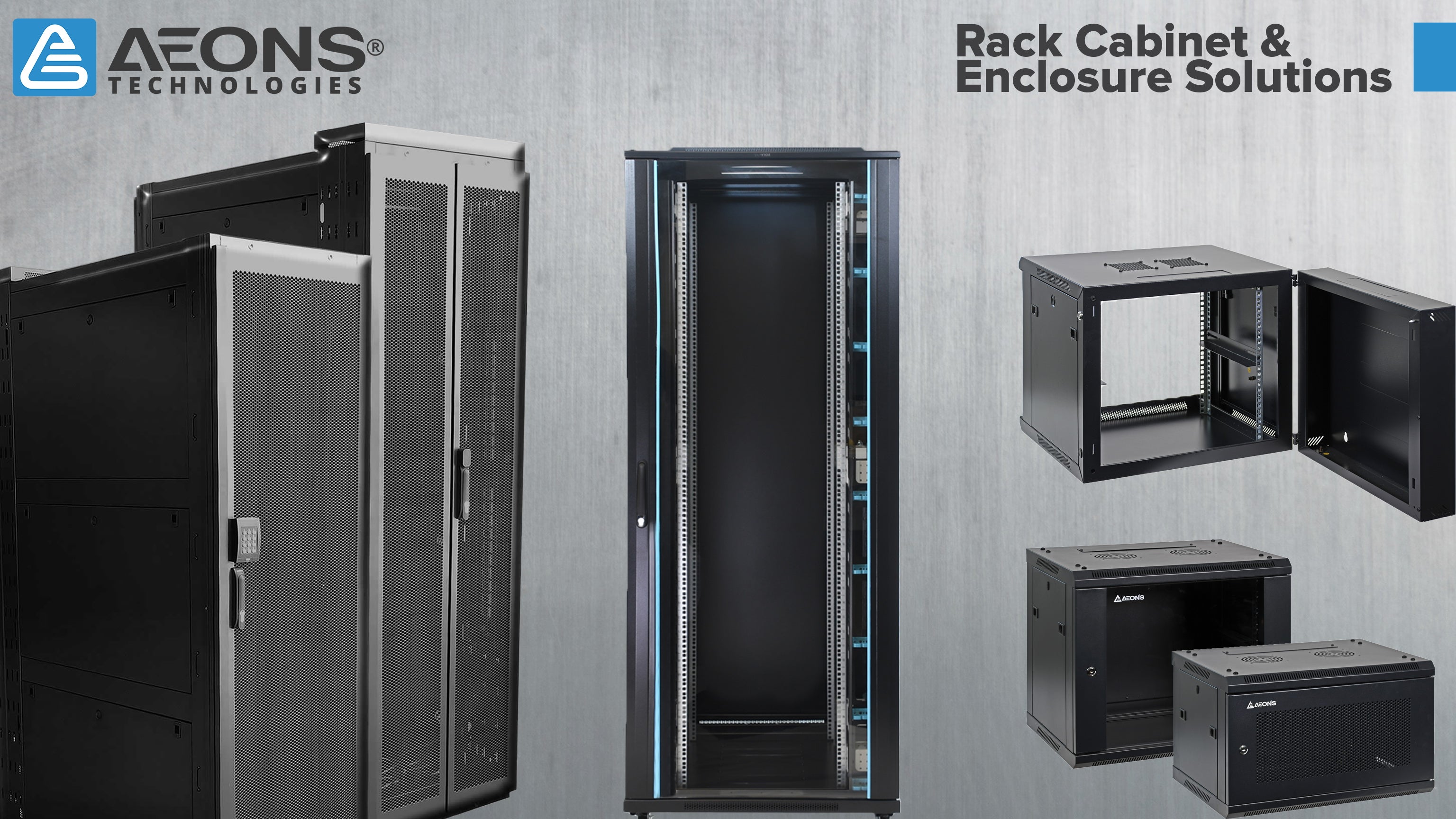Contents
- What is a Server Rack
- Sizes of Server Racks
- Type of Server Racks
What is Server Rack
Server racks are open frames or enclosures designed for mounting, organizing and securing EIA-standard 19-inch width rack-mount IT and A/V equipment such as servers, routers, hubs, switches and audio/video components, regardless of the manufacturer. They also provide cable management and enable airflow control for increased operational efficiency and prolonged equipment life.
Sizes of Server Racks
Server Rack Height
Server racks are typically designated by height, measured in “rack units” or “Us.” A standard rack unit is 1.75 inches (44.45mm), so a 42U rack is 73.6 inches (1866.90mm) high. Rack equipment is also specified in rack units — a 2U server will take up 3.5 inches (88.90mm) of space.
The most common server rack is 42U height. It is tall enough to accommodate all necessary IT equipment but small enough to fit through standard door openings in trucks, building entrances, and elevators. 42U is also unlikely to interfere with overhead sprinkler systems, and still easy to reach all of the rack positions without a stepladder. However, taller racks of up to 60U maximize the available vertical space in the same footprint if the data center can accommodate them.
Server Rack Width
“Standard” server rack width is 19 inches, which represents the usable space for mounting equipment (interior width). The exterior width is 24 inches (600mm), matching the traditional 24-inch by 24-inch tile in a data center-raised floor.
Server racks are also available in 29.5-inch (750mm) and 31.5-inch (800mm) widths. Wider racks take up more floor space but provide more room for cable management and power distribution. They also support larger equipment such as blade servers, converged infrastructure and high-density network gear, and equipment with side-to-side cooling.
Server Rack Depth
Actual and usable depth must also be considered in choosing a server rack depth. For example, a designation of 36 inches represents the outside depth of the server rack. The interior space will be less, potentially, depending upon the cabinet design. What matters most is the distance from the front mounting rail to the PDU. If the server fits within this space, there will be plenty of room for PDUs and cables without impeding airflow or interfering with maintenance. A server rack with an outside depth of 48 inches (1215mm) fits within two-floor tiles yet provides enough space for larger servers.
There are many depth options out there, but the decision is simple. You need a rack that is deep enough to accommodate all equipment effectively and that utilizes available floor space efficiently. Typical depth dimensions for server racks or cabinets:
27 inches - Shallow
31 inches - Moderately deep
37 inches - Average depth
42 inches - Deep
47 inches - Extra Deep
Type of Server Rack
Along with dimensions, server racks come in many styles and allow for exceptional customization:
2-post open frame rack — This type of rack is ideal for network wiring closets and distribution frame applications with high-density cabling. It can also mount cantilever shelving for other non-rack mountable equipment. Sometimes 2-post racks need to be bolted into the floor in order to provide the required stability.
4-post open frame rack — This type of server rack ranges in height and depth from 10U to 45U. Its open-air structure is typically used for server rooms that don’t require additional security and don’t need added airflow control. They can provide easy access and offer plenty of open space for cable management.
Cabinet enclosure — These fully enclosed server racks provide security, organization and airflow control flexibility. The height range for enclosed server racks is 6U to 48U. They come in various forms of density and are usually considered the cost-effective route for server racks.
Wall-mount server rack — Good for smaller spaces or footprints, this type of server rack is either open frame or cabinet style and mainly used for housing network equipment like patch panels and switches. It is known for a more straightforward installation process and affordable option. Some may include swing-out racks for improved accessibility.

